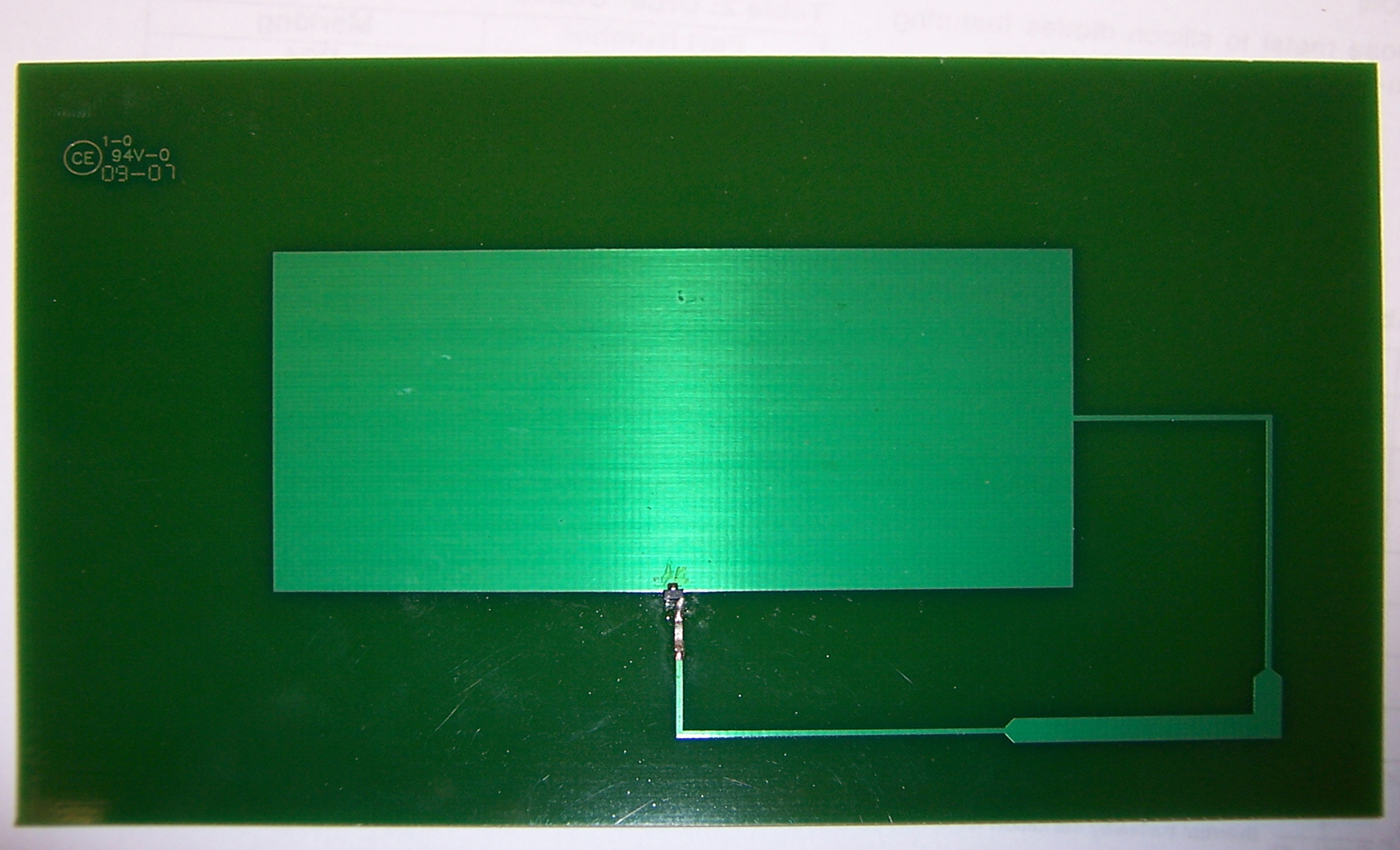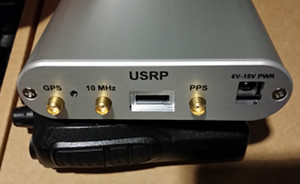Harmonic Radar
We developed a substantially miniaturized prototype with enhanced capabilities at greatly reduced size, weight, and cost compared to the expensive legacy systems out there.
Harmonic radar is useful for detecting specific targets in high-clutter environments. A non-linear junction, such as a diode, will produce harmonics of RF energy incident on the diode, that can be detected with a radar receiver.

$1 harmonic radar planar tag with corrosion detecting element.

Rapid prototyping with SDR enabled advances in harmonic radar technology.
Modeled Harmonic Radar Performance
One of the first questions people have is what is the maximum range of the system. That depends on numerous factors, including:
- radar transmit power
- radar antennas
- tag antennas
- tag diode
- frequency band used for a given antenna size
The typical radar equation is reconfigured into two-way Friis path loss, with a loss term for the harmonic radar tag. Conversion efficiency is typically less than 1%, so figure loss of at least 20 dB for the tag. In short, an unbiased diode tag will have maximum range of order 10 meters. You can push that up with more power or antenna gain. A DC-biased diode tag may achieve 100-1000 meters range.
We have harmonic radar modeling code. Please request what you’d like.
What frequency to use?
This depends on how large your tag can be. Work with insects has tended toward the 5 / 10 GHz pairing or 10 / 20 GHz. The free space loss will be much lower at 917 / 1834 MHz pairing, vs. higher frequencies. Thus, the trade off of less directive antennas for a given size gives longer range at 900 MHz. Most of the world has 800-900 MHz range license-free allocations with 1-4 Watts of transmit power allowed–just right for long range RFID and harmonic radar.
Select Publications from the Author/Coauthor
- 2005 era early harmonic radar system
- AMTA Harmonic Radar Presentation
- AMTA Harmonic Radar Paper
Harmonic Radar Literature Search
Historically, harmonic radar work was used for tracking insects above and below ground. These harmonic radar tags and system were funded in part by the Dow Chemical Company. U.S. Patent # 7,145,453 was issued for a state-sensing harmonic radar tag.
The specific research work we have done in regards to harmonic radar technology includes:
- Successful development of a miniature, low-cost harmonic radar tag that is half the size and costs 90% less to manufacture than the tag design patented above, while maintaining equal range of detection.
- Successful development of a more stable harmonic radar system than mentioned in the above patent. Specifically, the new design I developed provides for operation over a much wider temperature range, is unconditionally stable into any transmitter load, increased receive sensitivity and range, reduced transmitter harmonic leakage, increased RX/TX frequency stability through reference to one master TCXO, and increased mechanical robustness for transport.
Improving upon the original unmodulated CW Harmonic Radar
Because harmonic radar has many uses in the 10-100 meter range (radar to tag), a natural technology progression would be to implement an FMCW system. The planar patch antennas currently used have only several MHz of useful bandwidth, but a suitable FMCW system combined with a new more broadband harmonic radar tag is expected to allow even greater reliable detection range. Harmonic radar tags may be produced with bandpass elements that allow colocated tags to indicate more discrete states using additional sensing elements.